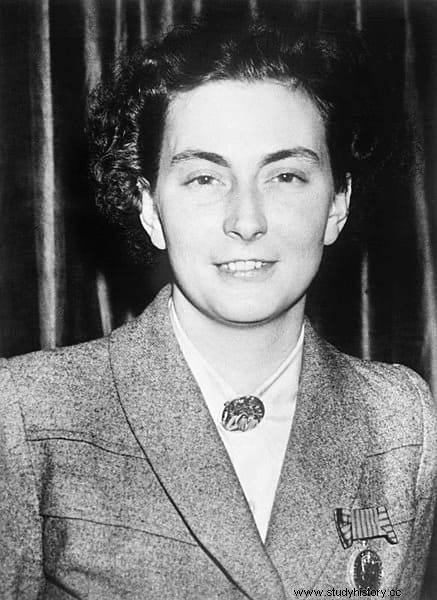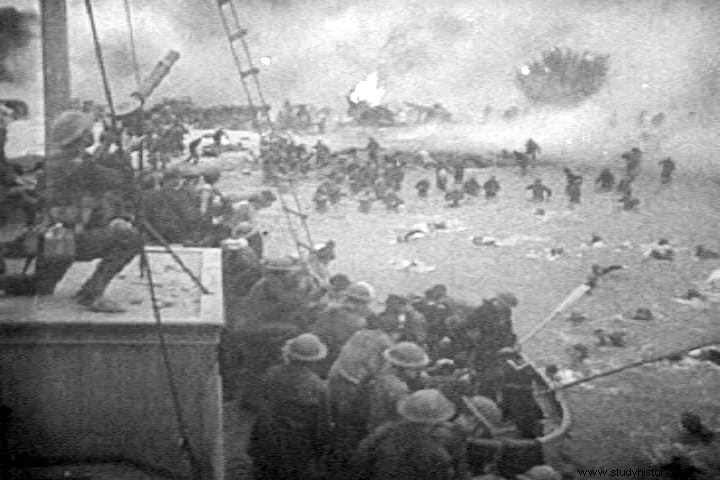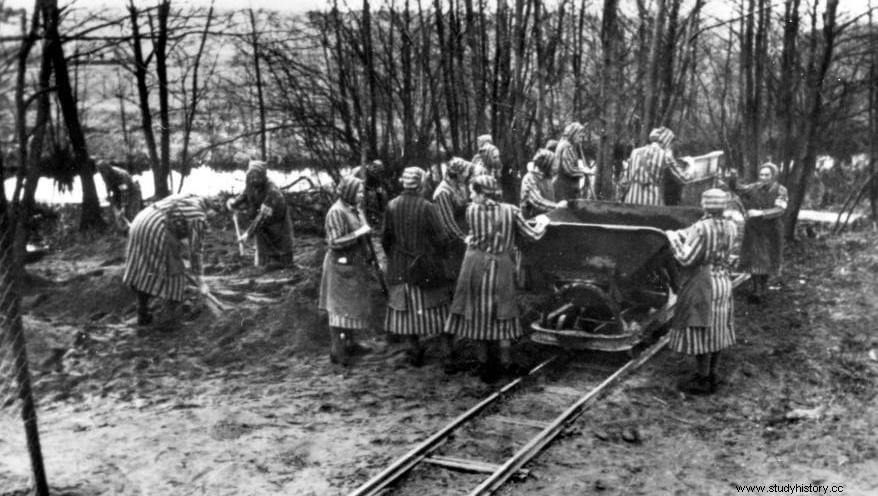You may have heard of the Underground Railroad , a clandestine network dedicated to organizing the flight of black slaves from the southern states of the US to the northern states and Canada, and whose name was due to the railway terminology that its members used in code. The model set the standard and during the Second World War it was imitated in Belgium to help escape British soldiers who had been isolated after the Dunkirk evacuation or fallen aviators behind enemy lines. It was called Le Réseau Comète (The Kite Line or Kite Network).
The line began in Brussels, where he hid in safe houses prepared ad hoc for "travellers" and provided rest, shelter, and care (food, civilian clothing) while false documents were made for them. The route then continued to France, which they crossed with guides to reach Spain, whose neutrality was, in principle, a guarantee. The goal was to cross the country from the north (passing from Bayonne to Bilbao or San Sabastián) and reach Gibraltar.
Of course, that was the basic idea that was later applied following different itineraries depending on the circumstances, although there were three others that complemented the main one:the Pat Line (Paris-Limoges-Toulouse-Barcelona), the Pat 2 (Paris-Dijon-Lyon-Avignon-Marseille-Nimes-Perpignan-Barcelona) and the Sherburne Line , which went directly to Great Britain (Paris-Rennes-St. Brieuc-Dartmouth).

Le Reseau Comète it was made up of diverse people connected to the Resistance and working on the ground. Among the most prominent names could be cited the Scottish Reverend Donald Caskie or the Franco-Belgian Monique de Bissy, who ended up arrested by the Gestapo. Some, such as Jean-François Nothomb, Michelle Dumon or Elvire de Greef, would receive decorations and there was no shortage of aristocrats in their ranks, such as Baron Jean Greindl or Count Jacques Legrelle, to name just a few. Likewise, religious and Catholic doctors abounded.
Of all of them, a twenty-four-year-old girl who was known as Dédée deserves special attention. her because she, after all, was the creator of that montage. Her real name was Andrée Eugénie Adrienne de Jongh, a native of the Belgian town of Schaebeek, where she was born at the end of 1916, curiously during the occupation of the country by Germany during the First World War. Her father marked her deeply, determining her life with her personal example. His name was Frédéric De Jongh and he was a simple school teacher who, however, would also be part of the Resistance.
But there was another person who impressed Andrée so much that she decided to imitate him. It was about Edith Cavell, a British nurse who directed L’École Belge d’Infirmières Diplômées , where she treated wounded British soldiers and helped them escape to the neighboring, neutral Netherlands. Cavell took hundreds of them out until the Germans discovered her game:she was actually a MI6 spy, so in October 1915 she was sentenced to death despite diplomatic pressure from the US (which was not yet a belligerent), and the ambassador of Spain Rodrigo de Saavedra.
Cavell was shot the next day precisely to avoid these efforts but, as often happens, her figure then took on mythical dimensions in articles, books and pamphlets, becoming an international heroine. The German General Staff itself admitted that her death had been a propaganda error by exacerbating the spirits of half the world. Andrée de Jongh, who was born the following year, was always influenced by her figure and, in fact, studied nursing; she surely she then she did not even imagine that she would follow in her footsteps also in the war field.
And it is that in May 1940 the Wehrmacht occupied Belgium and she was enlisting as a volunteer for the Red Cross in Brussels. The Operation Dynamo , that is to say, the evacuation of the BEF (British Expeditionary Force) from the beaches of Dunkerque, allowed the Allies to save some 200,000 British soldiers and another 100,000 French and Belgian soldiers. But behind were many who could not escape because they were injured in hospitals or were isolated. The De Jonghs, who had joined the Resistance, dedicated their efforts to them.

Andrée's official job was to treat the wounded, but she secretly set up safe houses for the others. In the summer of 1941, she already had a network organized in collaboration with Arnold Deppé and Elvire De Greef-Berlemont, who played a similar role in the south of France. The fugitives crossed hostile territory through the area controlled by the Vichy Government using trains and traveled almost two thousand kilometers to the Spanish border.
However, the first attempt was unsuccessful when it was found that the Spanish authorities, sympathetic to the axis, were arresting the British. Only two out of eleven were able to return to England, so Andrée herself personally accompanied the next group, thinking that a woman was less suspicious when crossing borders.
In August, after traveling by rail from Paris to Bayonne and crossing the Pyrenees on foot, she presented herself at the British consulate in Bilbao accompanied by a Scottish BEF soldier (James Cromar, from Aberdeen) and two Belgian volunteers (Merchiers and Sterckmans) requesting aid. Major Norman Crockatt and Lieutenant James Langley, in charge of MI9 (the military intelligence service), gave the go-ahead, among other things because the thing touched them closely:Langley had lost an arm in Dunkirk the previous year. In this way, a route to Gibraltar was designed that passed through the consulate in Madrid.
The help of MI9 allowed some 400 soldiers to escape from Belgium and return to their country. Airey Neave, a member of MI9 famous for having been the first officer who managed to escape from the Oflag IV-C prison camp (the famous Colditz Prison) and who was later part of the Nuremberg International Tribunal, wrote that Dédée (remember, Andrée's alias) had become one of her best agents; the Little Cyclone , nicknamed her. It was Neave who designed the alternative route between the coast of French Brittany and Dartmouth, a Devon town overlooking the English Channel from which gunboats with spies and supplies for the Resistance set sail and returned with escaped prisoners.
The truth is that this complex network, baptized as we said Le Réseau Comète Due to its speed, it posed an obvious risk to those involved due to the frequency of its operations and the fact that, starting in November 1942, the Germans also occupied southern France, so that the entire country remained under their direct control. Andrée still helped 118 allies to escape (including 80 crews of downed planes) in thirty trips, but it was a matter of time before they were discovered.
Indeed, the very Abwehr (German military intelligence) took matters into their own hands, although the bulk of the work was carried out by the fearsome Geheime Feldpolizei (secret military police), whose mission was precisely anti-espionage, the fight against sabotage and the elimination of the Resistance, among other powers. The Comet Line was discovered, partly thanks to denunciations, and hundreds of members arrested; their destination, after passing through the sinister interrogation room of the Brigade Spéciale N°2 , specializing in torture, was the firing squad or the concentration camps.
One of those who fell was Frédéric de Jongh, Andrée's father, captured by the Gestapo in Paris in June 1943 and executed a year later along with twenty-three other members of the network. Andrée had been arrested six months before him, on January 15, 1943, in her case in Urrugne (French Basque Country), when she was in the last stage of her thirty-third trip to Spain preparing to cross the Pyrenees . She was lucky because. despite confessing to being the leader of the network, she did not give any names and that made the Nazis not believe that she was so important to her, so she was sent to the Parisian prison of Fresnes.

The wave of arrests did not spell the end of Le Réseau Comète far from it, because it continued to function and still saved another 700 allied soldiers. In the meantime, Andrée was transferred to the Ravensbrück women's concentration camp and from there to the Mauthausen extermination camp, "for incorrigible enemies of the Reich." However, and despite becoming seriously ill due to malnutrition, she managed to survive until the liberation of the place in April 1945; Other colleagues from the organization were not so lucky.
With the end of the war, the adventures of Dédée ended. but not those of Andrée, who went to Africa to work selflessly in leper colonies. She herself would explain in interviews that it was something she had wanted to do since she was a teenager. She was in the Belgian Congo, Cameroon, Ethiopia and Senegal until her health problems, derived from her time in Mauthausen, took their toll and she had to return to Europe.
She definitely settled in Brussels, it was time for her recognition, receiving the Medal of Freedom medal for civilians at war, the George Medal "for acts of great bravery" and the Legion d'Honneur French. Likewise, her country admitted her to the Order of Leopold Belgian and she presented him with the Croix de Guerre to her value, also obtaining the rank of lieutenant colonel in the army. Long after her, in 1985, King Baudouin inducted her into her aristocracy by making her a countess.
Despite her ailments, Andrée de Jongh was long-lived; she lived for ninety years, ending her eventful existence in 2007. she is buried with her parents in the family crypt at the cemetery in Schaarbek, her hometown. According to MI9, the Comet Line once had nearly 14,000 collaborators who saved a total of 2,373 British soldiers and some 2,700 US soldiers.
